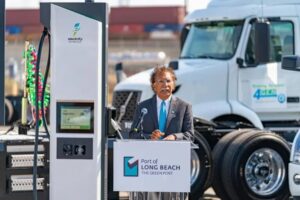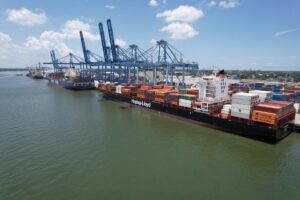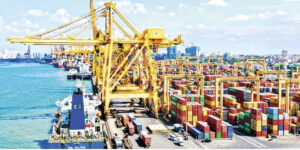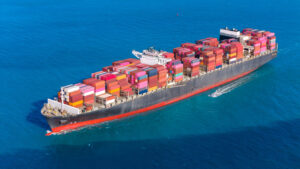Ocean freight analytics platform Xeneta has revealed that the collapse of the Francis Scott Key Bridge in Baltimore did not cause an increase in ocean freight container shipping rates.
The average spot rates from the Far East into the US North East Coast (including Baltimore) have fallen slightly (1 per cent ) since the bridge collapse on 26 March to stand at $5,421 per FEU.
When including other US East Coast ports such as New York and New Jersey (PANYNJ), rates from the Far East have decreased by 3 per cent in the same period.
According to Xeneta, average spot rates from North Europe to the US North East Coast have fallen by a larger 8 per cent in the same period to stand at $2,357 per FEU. When including other US East Coast ports, rates have decreased by 4 per cent.
Peter Sand, Xeneta Chief Analyst, said: “Spot rates have not reacted but that doesn’t mean shippers with cargo heading to Baltimore are not affected – on the contrary they are seeing containers arriving at ports they were not expecting.
“The majority of containers will now be handled at New York / New Jersey because many of the ships originally bound for Baltimore would have been stopping there anyway, which is perhaps why we haven’t seen an upward impact on rates.
“Ocean freight container shipping rates may not have increased following the bridge collapse, but this incident is yet another problem for shippers to handle on top of all the other disruptions impacting supply chains at the moment, including the ongoing diversions in the Red Sea region and drought in the Panama Canal.”
READ: Port of Baltimore suspends traffic operations amid bridge collapse
On 5 April, the Port of Baltimore issued an update noting that it plans to open a 280-foot wide and 35-foot deep federal navigation channel by the end of April, followed by the reopening of the permanent 700-foot wide and 50-foot deep channel by the end of May, returning port access to regular capacity.
While shippers will appreciate a date for the resumption of marine routes into Baltimore, Sand believes importers to the US East Coast may face more difficulties in 2024 owing to labour talks.
The International Longshoremen’s Association’s six-year contract with the United States Maritime Alliance, which represents East Coast port terminal owners and ocean carriers, ends on 30 September, and no new agreement has been struck.
READ: MPA extends support to US Coast Guard amid Baltimore bridge collapse
Sand added: “The threat of labour strikes on the East Coast has the potential to cause far more disruption to ocean freight shipping than the collapse of the Francis Scott Key Bridge.
“The clock is ticking and if no agreement is reached then the implications will be significant and widespread disruption at US East Coast ports. This would almost certainly see rates increase for ocean freight container services and could see some shippers choosing to head back to the US West Coats or Mexico for imports.”









